The trebuchet went out of use in the 15th century yet, in 2013, during the Syrian civil war, rebels were filmed using a trebuchet in the Battle of Aleppo and in 2014, during the Hrushevskoho street riots in Ukraine, rioters used an improvised trebuchet to throw bricks and Molotov cocktails at the Berkut.
By Nick Nutter | Updated 12 Sep 2022 | Andalucia | History |
Login to add to YOUR Favourites or Read Later
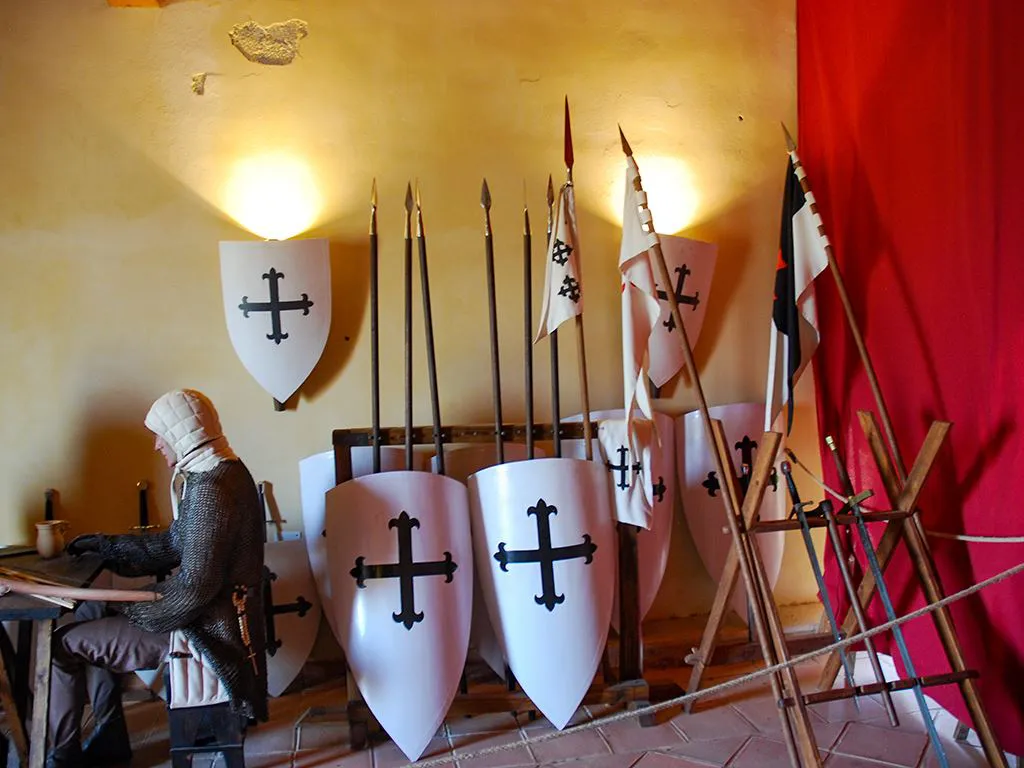
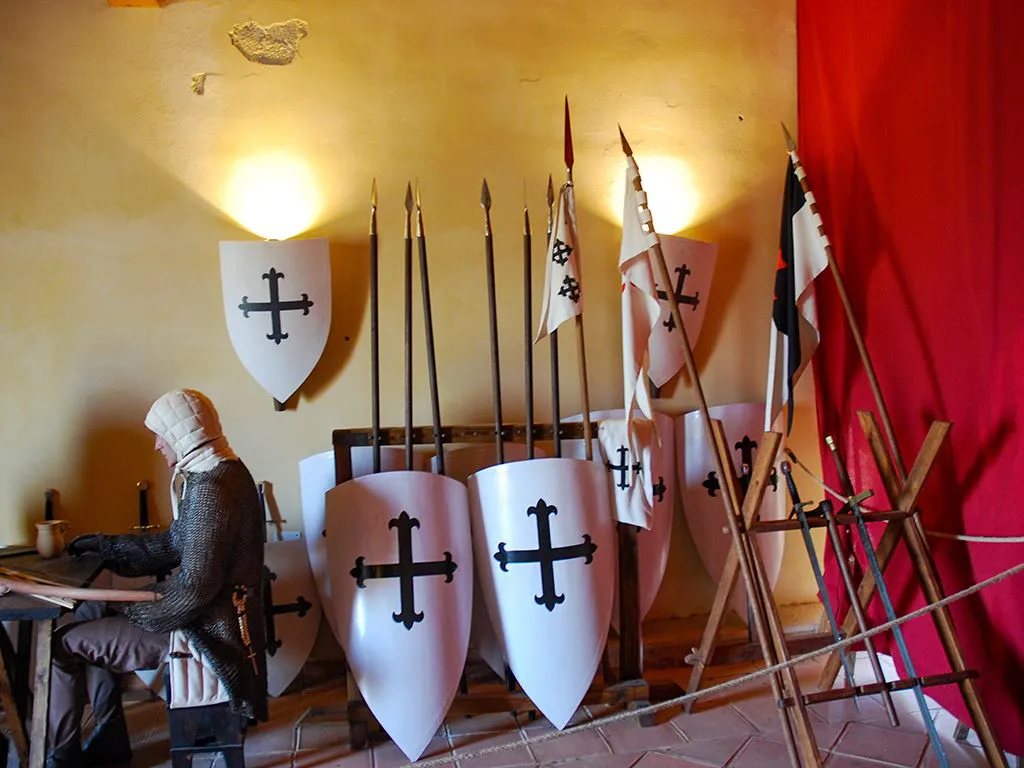
Cannon were used for the first time in Spain in 1342 at the Siege of Algeciras. The Muslim defenders used bombards, described as ‘thunder’ by the Christian besiegers. It would be many years before gunpowder propelled missiles would become more effective than the Mediaeval War Machines that had been used for hundreds of years.
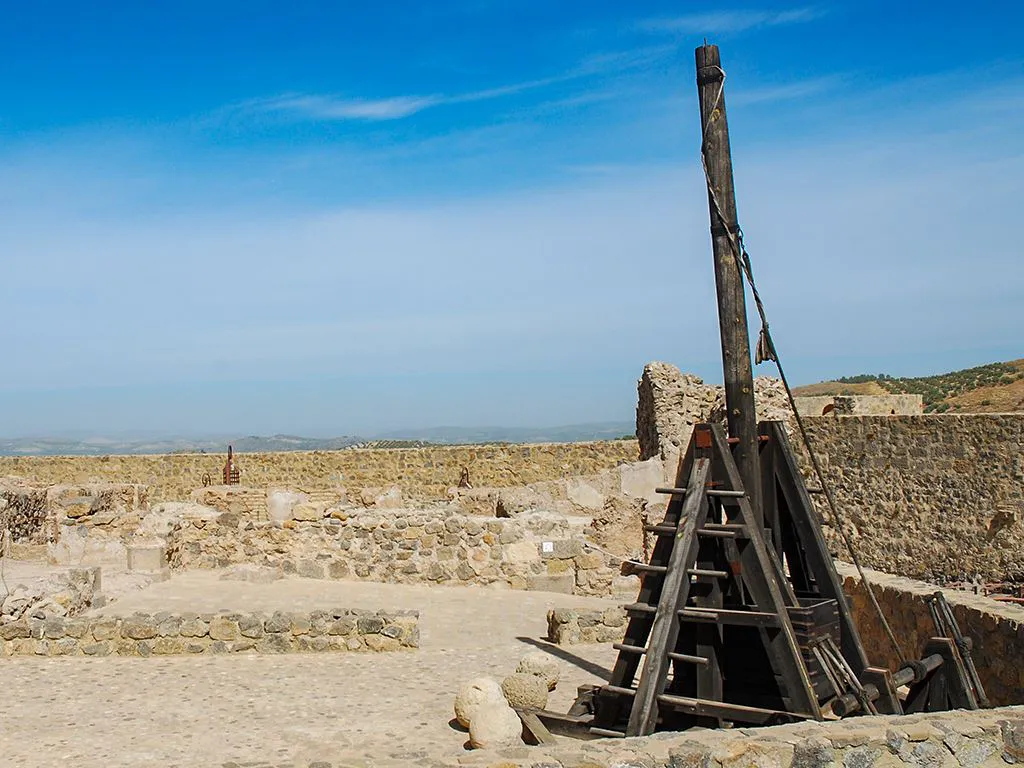
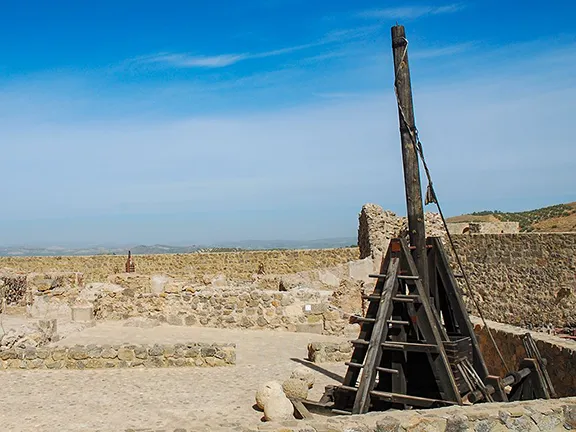
Trebuchet Castillo de Alcaudete
Sometimes called the counterweight blunderbuss, the trebuchet was invented in the Eastern Mediterranean sometime during the first half of the 12th century AD. It was a huge improvement on the catapult. A box, filled with lead, earth or stones, provided the weight necessary to throw a solid, wooden beam through an arc of 180 degrees. The innovative part was the sling suspended from the end of the beam that held a pouch that contained the missile. At the apex of its travel, one side of the sling was released, allowing the missile to continue its journey through the air. Whereas a catapult could typically lob a cannonball shaped stone weighing 70 kilos, a trebuchet could manage a stone cannonball weighing 90 kilos. A 14th century trebuchet with a counterweight of up to 13.5 tons could fire a 60 kilo stone some 365 metres with devastating effect. The range is actually affected more by the length of the beam than the weight of the counterweight. The trebuchet was also used to throw rotting carcasses and incendiaries over fortified walls. The Mediaeval trebuchet was last used in the late 15th century.
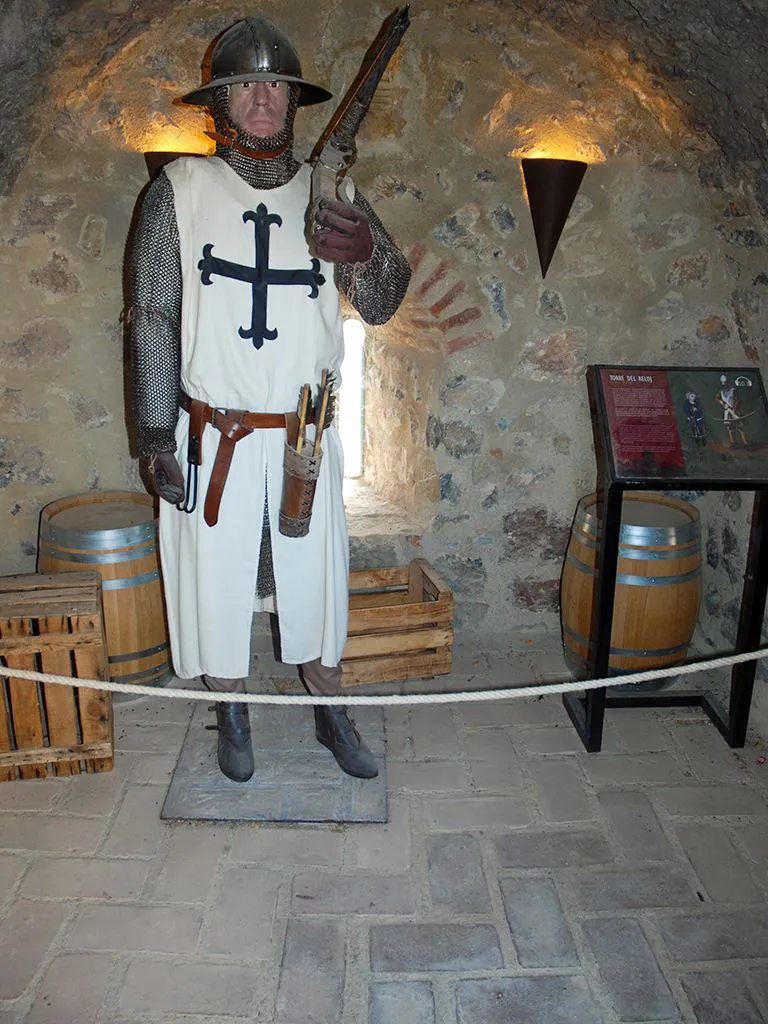
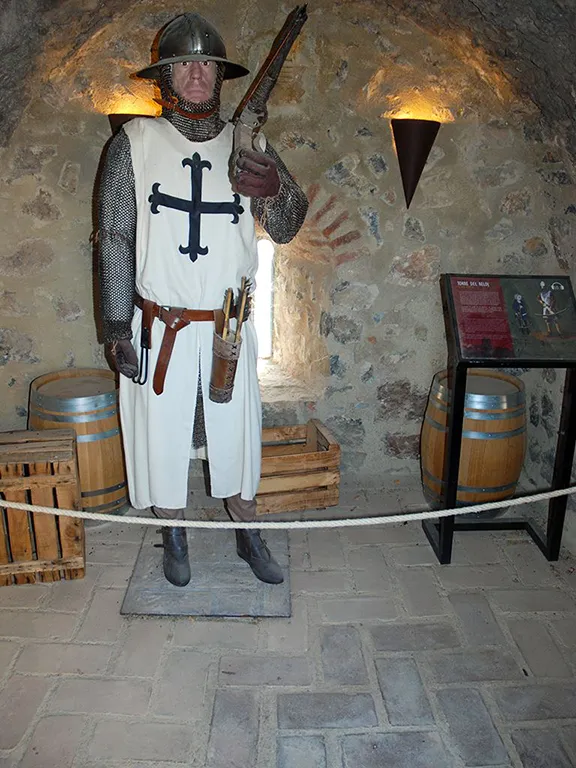
Crossbowman Castillo de Alcaudete
The guardsman is holding a crossbow of Balearic design, popular during the 13th century. This was a hand weapon although the string had to be drawn using a foot in the stirrup. A bolt weighing up to 50 grams could be fired point blank to a range of about 70 metres and up to 300 metres if fired at an angle. Despite modern fallacy, a mediaeval crossbow bolt would not penetrate mediaeval plate armour.
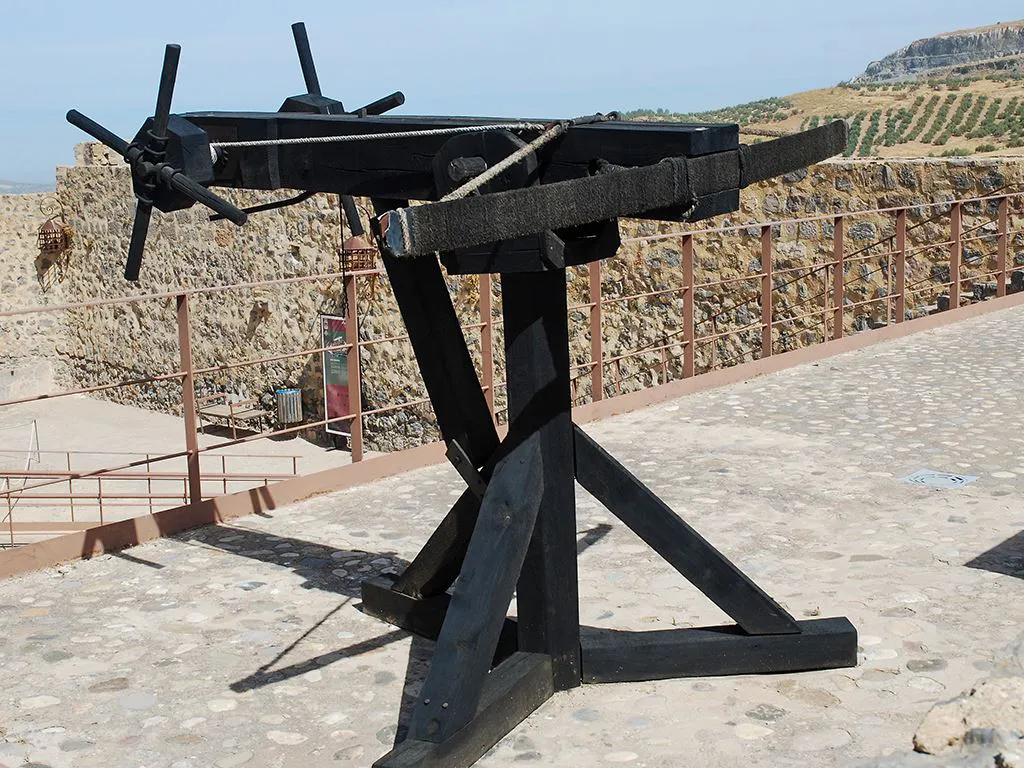
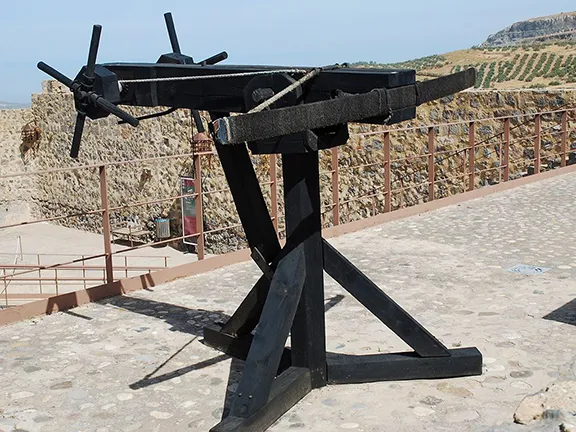
Ballista Castillo de Alcaudete
The Ballista was the most popular piece of artillery during the 12th, 13th and 14th centuries. It consisted of a body similar to that of a hand crossbow except of such dimensions it had to be on a solid plinth. The back part of the machine incorporated a hand winch to draw the cord and bend the bow that could be over 1 metre wide. The whole apparatus was mounted on a universal joint that allowed the ballista to be aimed up and down and from side to side. The Muslims called the weapon a jarkh. The heaviest jarkh could shoot a half kilo bolt up to 400 metres. Unlike the handheld crossbow, the ballista bolt would penetrate the armour of the day. The Ballista was primarily a defensive weapon and it was used by both Muslims and Christians.
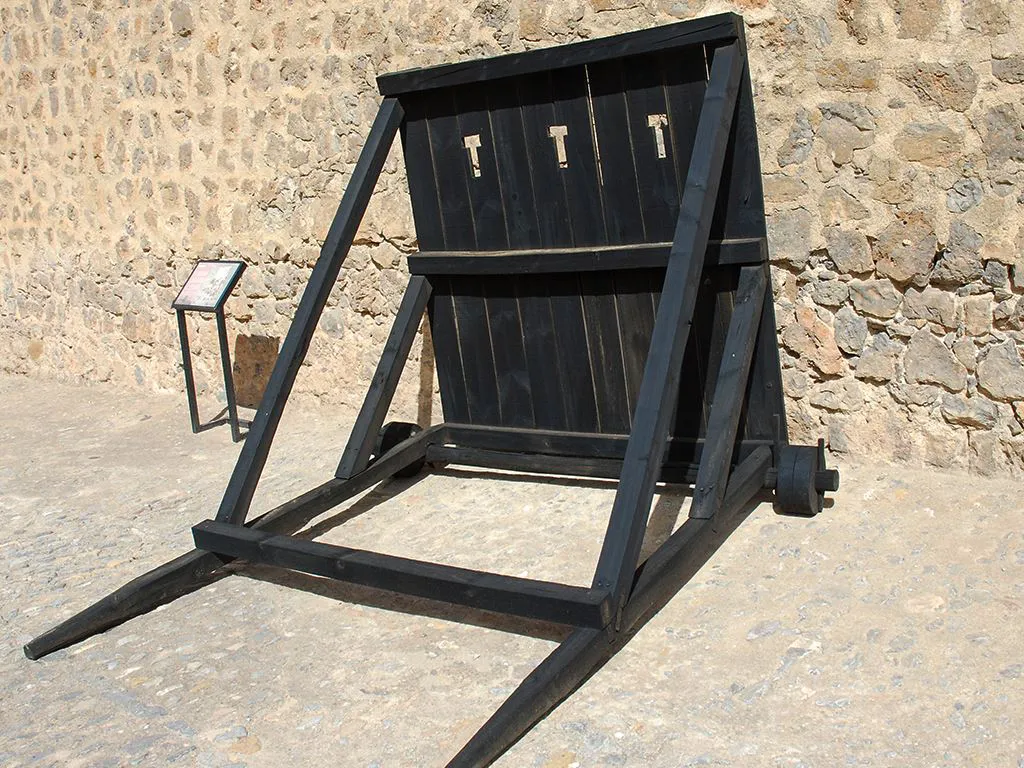
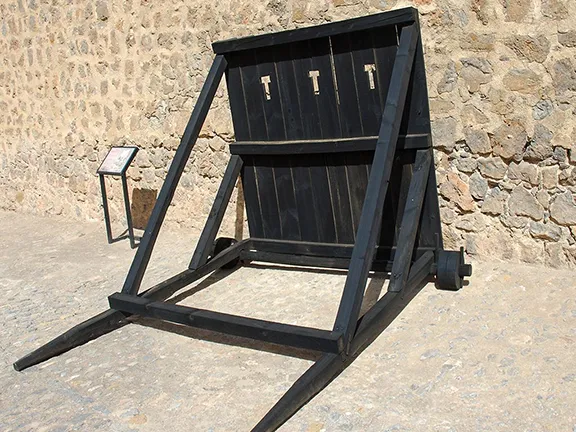
Siege Shield Castillo de Alcaudete
Siege shields were primarily used by attacking infantry. Their design was simple and they could be made from available materials, wood, wicker or leather. The shield incorporated arrow slits through which weapons could be fired and the frame normally had two wheels beneath the shield so that porters could move the shield forward, or backward, whilst the archers carried on firing. The siege shield was in use for thousands of years, since classical times.
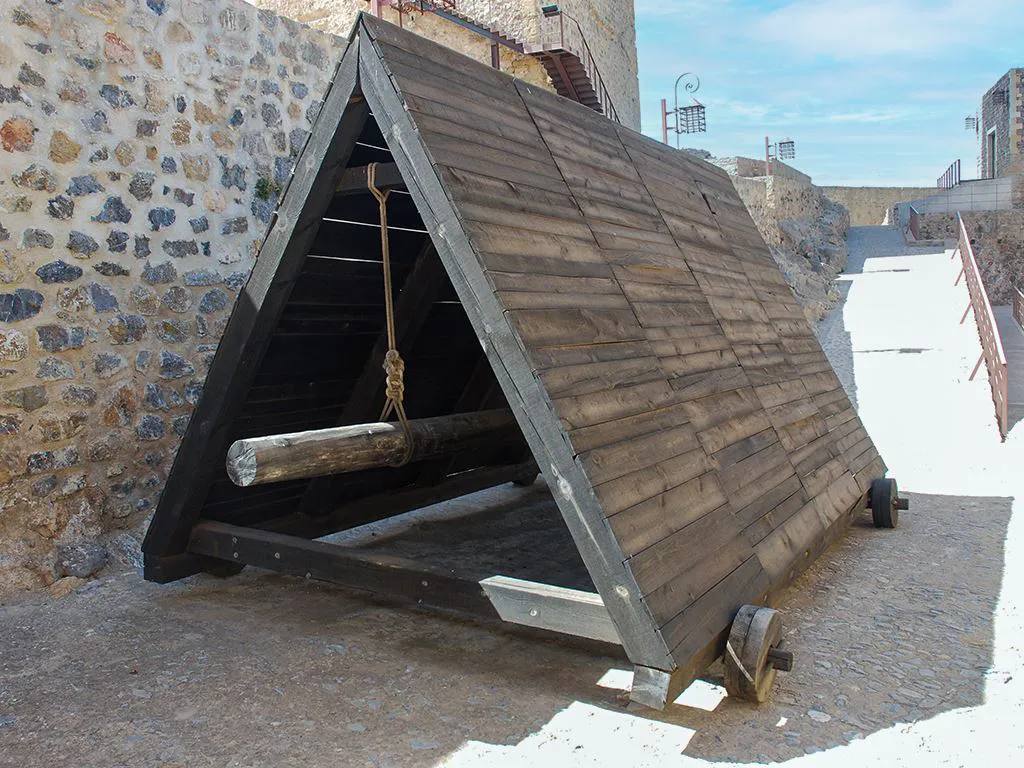
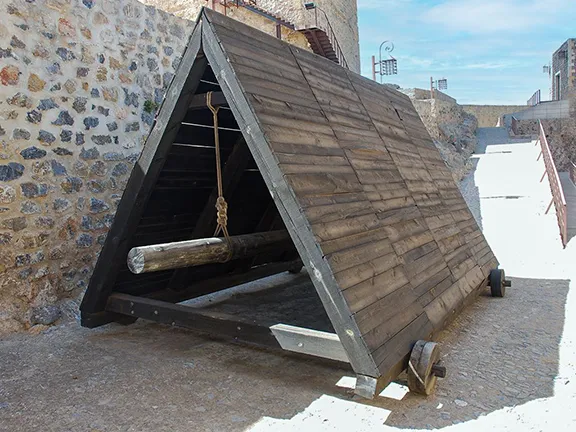
Battering Ram Castillo de Alcaudete
The battering ram is as old as fortified gates. Simple to construct, they provided protection to the troops operating the ram that, in its basic form was a substantial log suspended by rope from a beam. The troops pulled the beam back and then swung it forward. The rope giving the beam more impetus than one simply carried by hand. Defenders devised all manner of ‘tank traps’ to prevent the use of the battering ram.
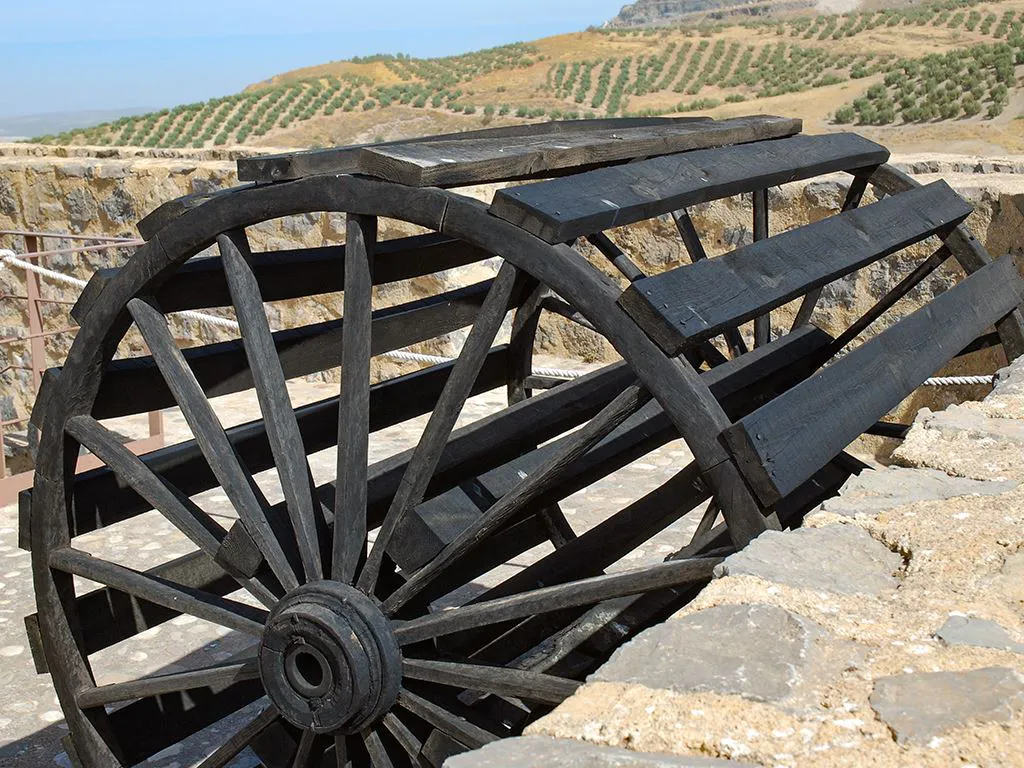
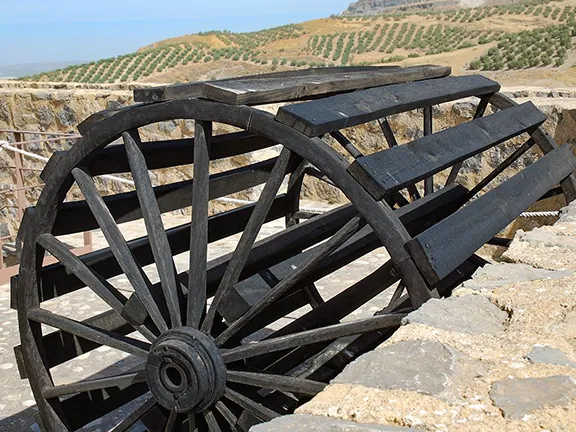
Wheel of Fire Castillo de Alcaudete
In its simplest form the wheel of fire consisted of a wooden or wicker frame between two wagon wheels. The frame was filled with flammable material, set alight, and rolled down the hill into the attacking enemy ranks. The wheel of fire was a preferred weapon of mediaeval war by the Muslims.
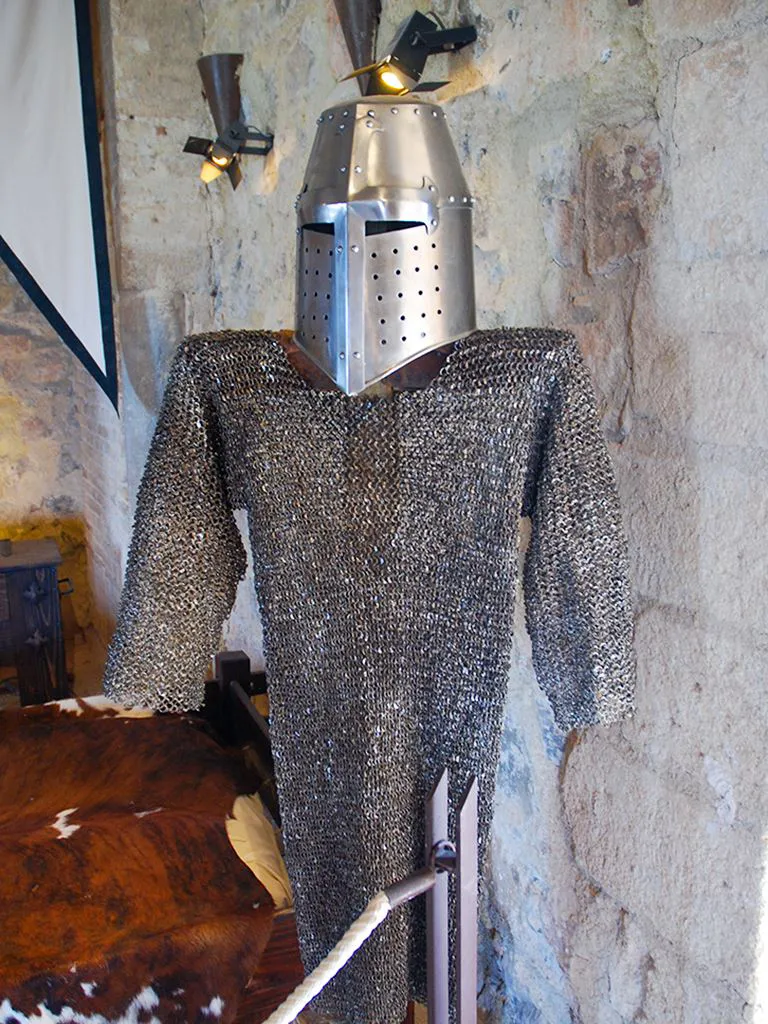
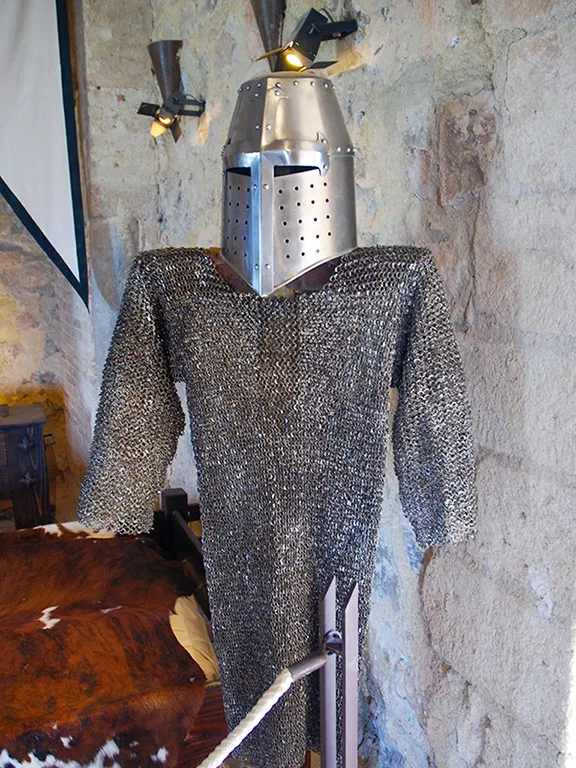
Mediaeval Body Armour Castillo de Alcaudete
There is an exhibition of mediaeval war machines at the Castillo de Alcaudete in Jaen province.